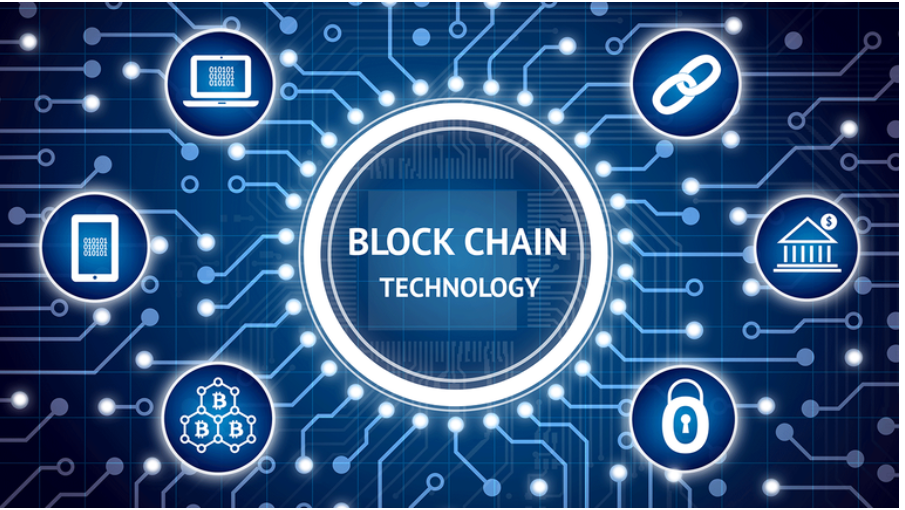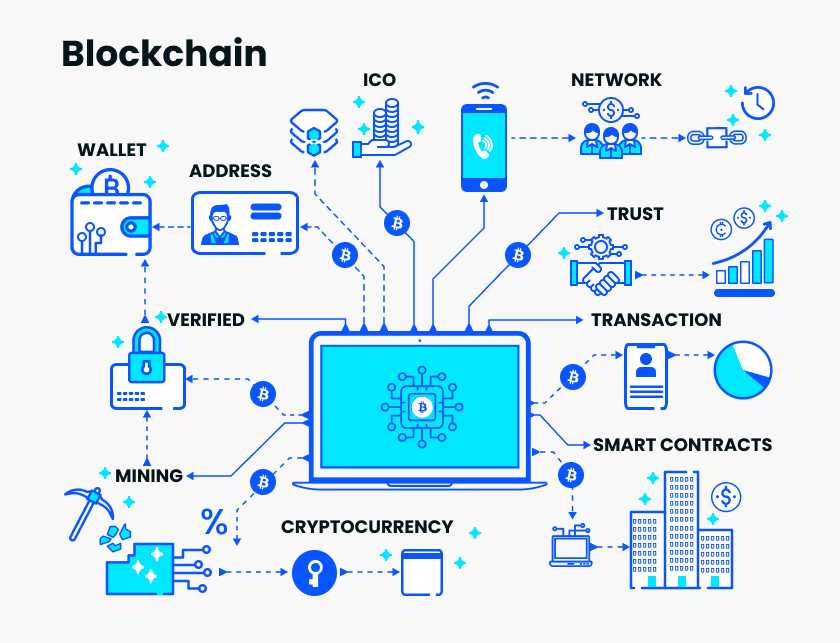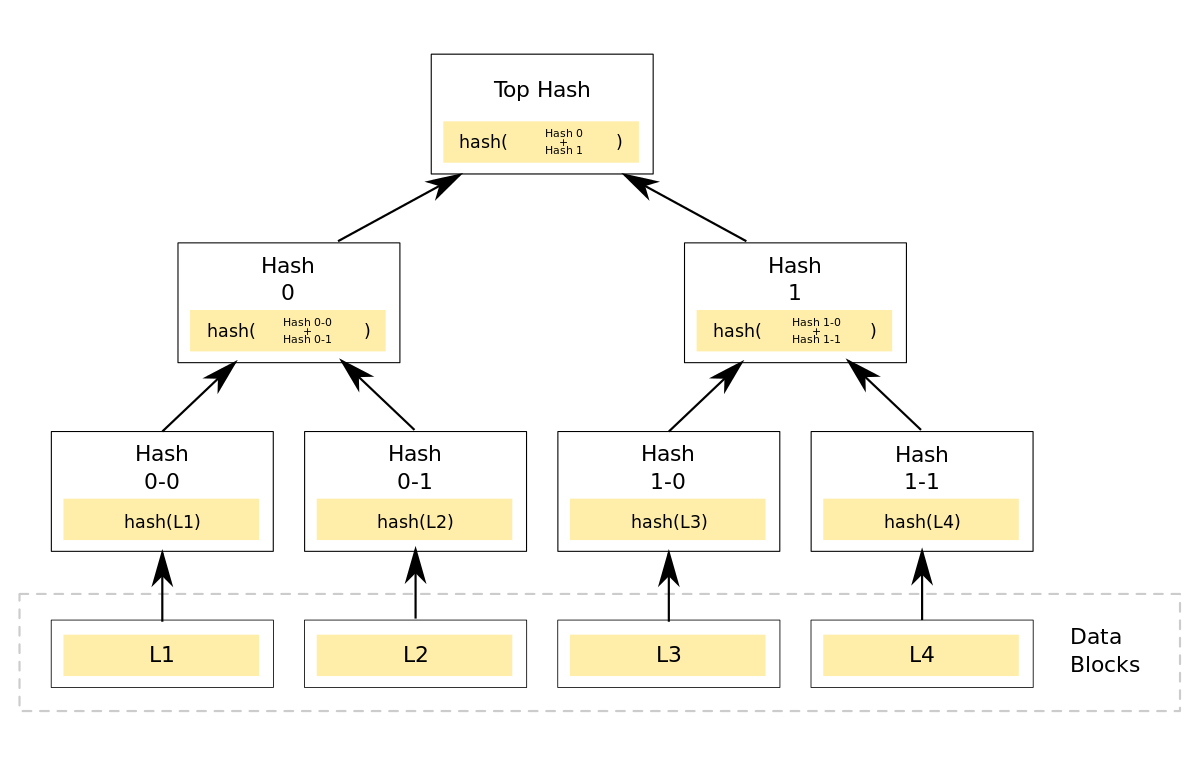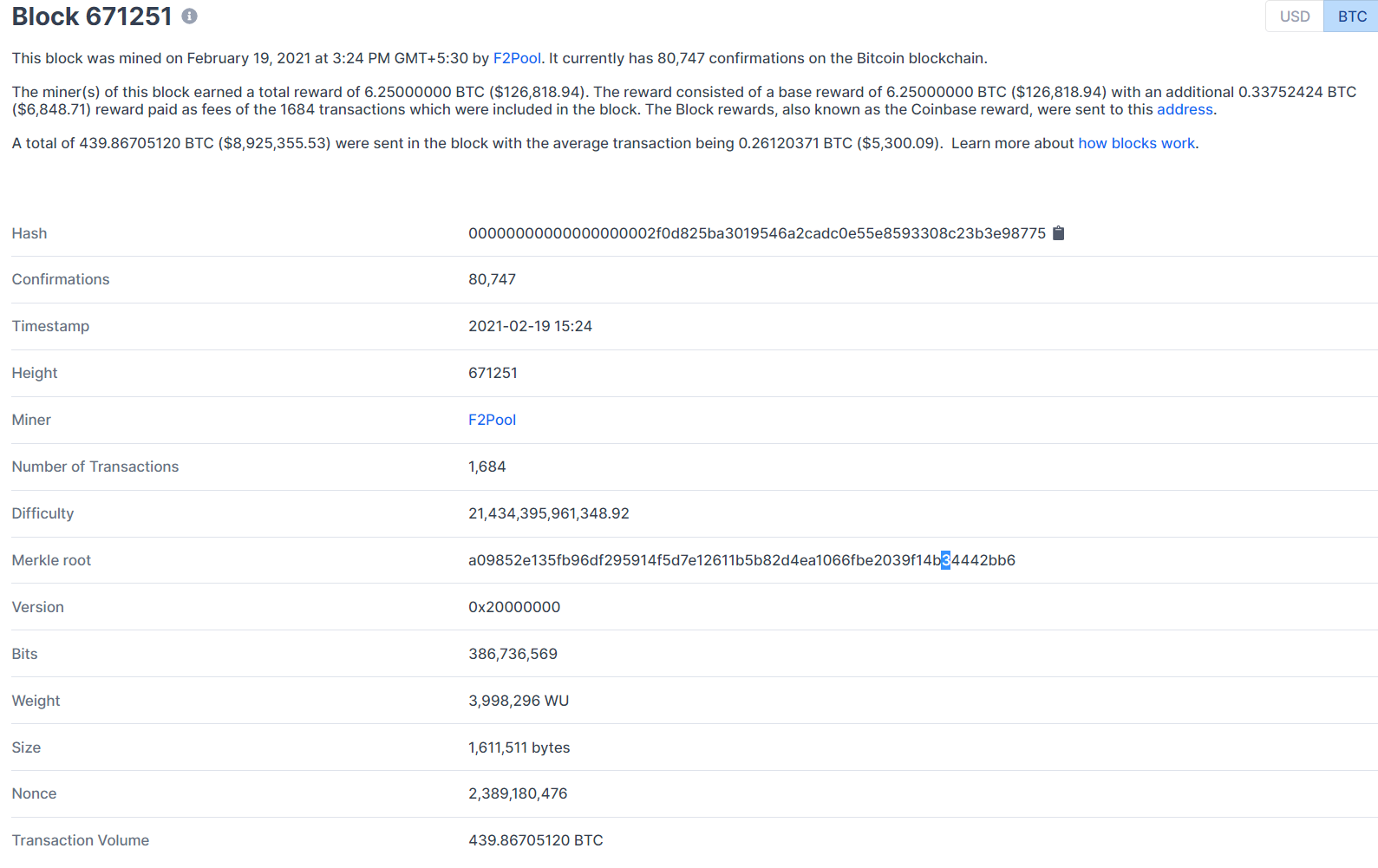Concept of Blockchain Technology
You’re at the grocery store and scan your favorite coffee’s QR code. You can see where the coffee beans were grown, cleaned, sorted, processed, and roasted. What if you can track its delivery and distribution to know the means of transport, how long it takes to arrive at the store, etc.? Is there a technology that can help record information at every step of the way and make it transparently available to everyone? Blockchain technology is the answer to that.
This article was published as a part of the Data Science Blogathon.
Learning Objectives:
- Understand the meaning, importance, and benefits of blockchain technology.
- Learn the various uses and applications of blockchain technology.
- Understand the difference between a blockchain ledger and a database.
- Know the different types of blockchain technology.
- Learn how blockchain technology works.
Table of contents
- What is Blockchain Technology?
- Why is Blockchain Important?
- Where Can We Use Blockchain Technology?
- Difference Between a Blockchain Ledger and a Database
- Understanding the Key Terminologies of Blockchain Technology
- How Secure is Blockchain?
- What is a Block?
- What Information is Stored in a Block?
- How is a Transaction Recorded in the Blockchain?
- Types of Blockchain Technology
- Benefits and Importance of Blockchain Technology
- Conclusion
- Frequently Asked Questions
What is Blockchain Technology?
Blockchain technology is a decentralized digital ledger that records transactions in a secure and transparent manner. Each block in the chain contains a unique code and a record of previous transactions. Blockchain technology is used to create a decentralized, secure database that multiple parties can access and update in real time.
In simple terms, blockchain is a special kind of computer database that makes it easy and safe for lots of people to share information with each other. Instead of keeping all the information in one place, it stores data in blocks connected like links in a chain.
Each blockchain involves a series of transactions. Note that each new structure appears on the blockchain. However, a decentralized database run by various candidates is called DLT or Distributed Ledger Technology. Blockchain refers to a type of DLT that records each transaction using a HASH (immutable cryptographic signature).

Blockchain is immutable, distributed, and decentralized. It is a peer-to-peer ledger replicated across multiple nodes connected in a network that allows recording data about any event or transaction as it occurs. It consists of blocks on a chain that uses a secure algorithm to be recorded as a digital asset.
Satoshi Nakamoto first proposed Bitcoin as a concept via a white paper in 2008.
Why is Blockchain Important?
Recording financial transactions with traditional database technologies can be difficult. For example, when a property is sold, and the money is exchanged, it’s hard to trust that both parties will record the transaction accurately. The seller could claim they haven’t received the money when they have, and the buyer could say they paid when they didn’t. This creates a problem because there’s no way to know who’s telling the truth.
Blockchain is important because it offers a revolutionary new way to securely and transparently record, store and transfer information. The technology has the potential to transform a wide range of industries, from finance and healthcare to supply chain management and beyond.
Firstly, blockchain provides a high level of security for information. Each block in the chain is linked together and encrypted, making it extremely difficult to tamper with the information stored within. This makes it a very secure way to store sensitive data such as financial records or personal medical information.
Secondly, blockchain enables transparency and trust in transactions. Because every participant in a blockchain network has access to the same information and can see every transaction that takes place, it creates a level of trust between parties that was not possible before. This makes it an ideal technology for industries where trust is crucial, such as finance or supply chain management.
Thirdly, blockchain can reduce costs and increase efficiency. By removing intermediaries and automating processes, blockchain can streamline operations and reduce the time and cost involved in many transactions. For example, it can facilitate the transfer of funds between parties without the need for a bank or other financial institution to act as an intermediary.
Fourthly, blockchain can empower individuals and promote inclusivity. By using blockchain technology, individuals can control their data and participate more actively in the economy. This can lead to greater financial inclusion, as people who may have previously been excluded from traditional financial systems can now participate more easily.
Lastly, blockchain can potentially disrupt traditional power structures and create a more equitable society. By providing a way for people to interact with each other directly, without the need for intermediaries, blockchain can create a more democratic and decentralized society. This has the potential to empower individuals and communities and lead to a more equitable distribution of resources and power.
Where Can We Use Blockchain Technology?

Food Safety
Walmart works with IBM to improve the tracking and traceability of food products, leading to better food safety. When integrated with the latest data collection technologies, blockchain has huge potential in the food industry. Based on the respective strengths of blockchain and the Internet of Things (IoT), we can revolutionize the food industry. IoT solutions connect the physical and digital worlds, capturing data such as temperature and humidity during product transport or storage. Blockchain provides a secure and immutable platform where all participants in the supply chain can store and access this data.
Some of the advantages are:
- It will streamline the supply chain and reduce costs for retailers
- It offers easier compliance
- It will improve and speed up the process of downloading food.
Real Estate Title Issuance
The title registry system uses blockchain to make title issuance instantaneous. A blockchain is a form of digitally distributed ledger that forms a database. Its main characteristic is that it is immutable. Therefore, the information entered in the ledger cannot be deleted, modified, or altered. Blockchain technology has the power to wipe out any third-party intermediary that works for the real estate industry.
The first application used blockchain to tokenize ownership interests in real estate. Digital tokens that prove an investor’s ownership of an entity have been offered to investors in real estate funds and joint ventures to finance commercial real estate projects (tokenization). With the tokenization of equity, a blockchain-based ledger system can replace any entity’s ownership share registered within the capital stack of a real estate project.
Global Money Transfer
Global money transfer is time-consuming, error-prone, costly, and susceptible to money laundering. Blockchain’s secure, immutable, decentralized, and transparent feature helps solve money transfer problems without intermediaries. The most useful and reliable advantages of cryptocurrency transfers are fees and speed.
While the process seems to require a few more steps than traditional money transfers, until cryptocurrency becomes mainstream, this system will mainly serve people who need to prioritize spending and speed. Eventually, the conversions will stop as needed, and the technology will adapt as we introduce it. Another advantage is that you can do it all yourself – some people find it great, and others not.
Supply Chain
Based in Singapore, VeChain has created a blockchain-based permissioned supply chain that monitors products moving from manufacturer to store shelf. Blockchain can provide greater supply chain transparency and reduce costs and risks throughout the supply chain. Specifically, blockchain supply chain innovation can deliver the following key benefits:
Primary potential benefits:
- Increase material supply chain traceability to ensure compliance with corporate standards
- Lower losses from counterfeit/grey market trading
- Improve visibility and compliance with outsourced contract manufacturing
- Reduce paperwork and administrative costs
Secondary potential benefits:
- Strengthen the company’s reputation by providing transparency about the materials used in products
- Enhance the credibility and public belief in shared data
- Reduce the potential risk to public relations due to improper practices in the supply chain
- Engage stakeholders
Difference Between a Blockchain Ledger and a Database
Both the database and Blockchain record transactions, but the database is centralized and has a single point of failure. In contrast, Blockchain is decentralized and distributed across multiple nodes in the network.
Each node in the blockchain network collectively participates in a consensus algorithm using Proof-of-Work.
Databases are owned by a central office, company, or government institution that controls access by granting different roles to different users. Blockchain, on the other hand, is a peer-to-peer network where every node can connect to every other node. A secure cryptographic protocol like SHA-256 connects the blocks in the chain.
Understanding the Key Terminologies of Blockchain Technology
Ledger
The ledger records transactions such as payment, supply chain details, medical, real estate contracts, etc.
SHA-256
SHA-256 is a cryptographic algorithm that accepts input of any length, deterministically encodes the data, and returns a hash of 256 bits or 64 characters. The SHA-256 hashing algorithm ensures that the output can never track back to the input, making it very secure.
Mining
It is the process of verifying and recording new transactions on the blockchain performed by Miners, for which they have special mining software.
Node
A node in a blockchain can be any electronic device that is part of a peer-to-peer network and maintains its copy of the blockchain.
The Merkle Tree
A Merkle tree is also called a “hash binary tree,” a data structure for storing transactions in the blockchain efficiently and securely.
A Merkle tree summarizes all transactions in a block by creating a digital fingerprint of the entire set of transactions. It is created by repeatedly hashing a pair of transactions from the bottom until we have only one hash, referred to as the Root Hash or Merkle Root.

Merkle trees are used in the blockchain to store transactions because they allow users to use the root hash to verify that a transaction was part of a block.
A Merkle tree requires little memory, is computationally fast, and only a small amount of information needs to be transferred over the blockchain network.
How Secure is Blockchain?
Immutability
Blocks in the blockchain are for one write only. The data in each block is encrypted using the SHA-256 algorithm, which makes it very difficult to modify the data. Any change in the data makes the newly updated block invalid. This ability of blockchains prevents transactions from being altered.
Consensus
Nodes within a distributed blockchain network must agree on the actual state of the network to ensure the validity of transactions using Proof of Work or Proof of Stake.
Transparency
Blockchain is decentralized and distributed among multiple nodes across a network of computers. If one user tries to falsify a blockchain transaction, all other nodes in the blockchain network will cross-reference and easily flag the node with incorrect information.
What is a Block?
Blockchain is a shared digital ledger. A block in Blockchain records a transaction or transactions to organize, track and review information for informed decision-making.
Each time a new transaction appears on the blockchain, a record of that transaction is developed as a new block to the chain. A new block is added to each participant’s node ledger only after using a consensus algorithm such as proof of work to validate a transaction. A block in a chain is immutable. It can never be updated and can only be appended to a string.
The exclusive first block added to the blockchain is the Genesis block.
What Information is Stored in a Block?
The block consists of a:
- Block header containing metadata a
- A transaction is stored in a block using a Merkle Tree.
A block header in a blockchain consists of the attributes which are as follows:
1. A version number for tracking software or a protocol that will allow other computers to read the block correctly.
2. Timestamp: when the transaction was recorded or the block was created and is expressed in seconds since 1970-01-01T00:00 UTC.
3. A 256-bit cryptographic hash of the previous block header connects one block to the next block in the blockchain. This ensures the integrity of the previous block up to the first block, referred to as the Genesis block.
4. A nonce means a number used only once. A nonce is a randomly generated number that miners generate to solve a complex mathematical problem to create a block.
5. The goal represents the difficulty of generating a nonce that validates a transaction before it is added to the blockchain. It regulates the rate at which new blocks are added to the blockchain and is modified roughly every block in 2016. A higher difficulty in generating a nonce represents a lower target value.
6. Merkle root hash for all transactions in the block.
Transactions or transactions are stored in a block using a Merkle hash tree.
A block hash is a separate hash derived from the data in the block header using SHA-256.
A block hash uses a nonce, so the hash is tied to the nonce forever. The nonce is used to create a secure hash that meets the criteria according to the target. The hash must start with many zeros according to the target.

How is a Transaction Recorded in the Blockchain?
Blockchain miners install and run special Blockchain mining software that allows their computers to communicate securely with each other. Once a computer has installed the software, joined the network, and started mining, it becomes a ‘node.’
Blockchain can record any transaction, such as real estate contracts, when person A sells the property to person B for x amount, or when food is produced on a farm, goes through the entire supply chain, and is consumed by a consumer.
- The sender or originator of the transaction digitally signs the transaction.
Digital signatures are a fundamental building block in blockchains; they primarily verify the authenticity of transactions. The transaction’s sender utilizes the data and the private key to encrypt the message.
If Peter wants to do business with Patty, he must digitally sign the transaction using his private key and transaction data and send it to nodes on the network. - The transaction is broadcast to the network.
After a transaction is transmitted to the network, it is verified by all available Blockchain nodes.
- Nodes verify the transaction.
Knowing Peter’s public key will make it possible to confirm the transaction’s authenticity. Peter’s public key, the transaction, and Peter’s digitally signed transaction will verify the transaction.
- Valid transactions are stored in the mempool.
Mempool stores all valid transactions awaiting network confirmation. Miners pull transactions from the mempool to combine them into a block.
- Miners verify block addition using consensus.
To add a new block to the blockchain, a computational puzzle must be solved that encrypts the block’s data.
Miners pull verified transactions from the mempool and try to solve a complex mathematical problem. Miners find a nonce such that the hash of the block is less than or equal to the current target of the Blockchain network, also called POW (Proof of Work)
Types of Blockchain Technology
Public Blockchain
- Public blockchains are unlimited, transparent, permissionless, and fully distributed ledgers.
- No individual or entity controls the blockchain and the transactions that are recorded on the blockchain.
- Anyone can view transactions on the public blockchain.
- Transactions are added to the blockchain with the help of a consensus algorithm.
- Examples of public blockchains: are Bitcoin, Ethereum, or Litecoin.
Private Blockchain
- A private blockchain is centralized and restrictive, and users require permission to connect.
- Work in a closed network.
- Controlled by companies to record their sensitive business data so that it is not visible outside the organization.
- Transactions are private and only available to authorized users on a closed network.
- Private blockchain examples: hyper ledger
Hybrid Blockchain
- A hybrid blockchain consists of a private and a public blockchain.
- It combines the permissioned feature of a private blockchain with a public blockchain’s security and transparency feature.
- Access control decides which users can view data on the blockchain or add data to the blockchain.
- Suitable for businesses that give them the flexibility they need to operate securely and transparently
Consortium Blockchain Networks
- These blockchain networks are governed by a group of organizations.
- These organizations are responsible for maintaining the blockchain and deciding who can access the data.
- Consortium blockchain networks are particularly appealing to industries where many organizations share common goals and can benefit from working together.
- The Global Shipping Business Network Consortium is an example of a not-for-profit blockchain consortium that aims to digitize the shipping industry and increase collaboration between maritime industry operators.
Benefits and Importance of Blockchain Technology
Blockchain Technology incorporates several highly advanced technologies to ensure your money’s complete safety and security. With improved features, BlockChain is irresistibly diverse.
Transparency
The transparency in the transaction makes blockchain one of the most trusted software. There are different types of blockchains. Public blockchain offers transparency due to its features. This technology operates in various aspects of our society, including elections.
Immutability
Its immutability opens up several opportunities for platforms that require immutable properties to make their system more advanced and functional to compete in the market. For example, you can take chain stock. Immutability allows the company to ensure that no obstacle will continue to exist during transit.
Digital freedom
This technology offers digital freedom. You can be pleased with centralized entities that offer connectivity related to the economy. You can take your bank, for example. The bank can block all transactions or freeze the account if it sees fit. However, when you consider blockchain, you can see that there is no centralized authority.
Easy to use
For a knowledgeable person, using blockchain technology is not difficult. Blockchain is not limited to one specific use case. For its ease of use, it can be used in every sector, such as banking, trade finance, government, healthcare, petroleum, education, etc.
Highly secure
This technology uses cryptography to add another layer of security to information storage networks. Blockchain provides better security than other networks. It uses complex mathematical algorithms to ensure maximum security.
Increased efficiency
Lastly, improving efficiency is one of the most important reasons blockchain is so important. Better security, intermediate removal procedures, and improved technology make it one of the most trusted means. Transactions only take seconds to complete, not a week or two. International transactions have also become easier.
Conclusion
Blockchain Technology is a safe, immutable, peer-to-peer distributed ledger that is decentralized. It consists of a secure block linked in a chain and replicated across multiple nodes connected in a blockchain network. Public, private, and hybrid blockchains can be used based on the useful features of blockchain technology.
Key Takeaways:
- A blockchain is a type of shared database that differs from a typical database in the way it stores information; blockchains store data in blocks that are then linked using cryptography.
- As new data comes, it is directly entered into a new block. Once a block is filled with data, it is chained to the previous block, chaining it together chronologically.
- Various types of information can be stored on the blockchain, but the most common use so far has been as a ledger for transactions.
- In the case of Bitcoin, the blockchain is decentralized so that no single person or group has control – rather, control is maintained by all users together.
- Decentralized blockchains are immutable, meaning that entered data is irreversible. For Bitcoin, transactions are permanently recorded and can be seen by anyone.
Frequently Asked Questions
A. A popular example of blockchain technology is Bitcoin, which is a digital currency that uses blockchain to record and verify transactions. Other examples include Ethereum, Ripple, and Litecoin, which also use blockchain to store and verify transactions. Apart from cryptocurrencies, blockchain technology is used in a variety of other applications, such as supply chain management, identity verification, voting systems, and real estate transactions.
A. There are primarily four types of blockchain technology:
1. Public Blockchains: open and accessible to everyone
2. Private Blockchains: restricted to specific groups or entities
3. Consortium Blockchains: governed by multiple organizations that validate transactions
4. Hybrid Blockchains: a combination of two or more types of blockchains.
Each type has its own advantages, disadvantages, and various applications based on the need for security, privacy, and decentralization.
A. Blockchain technology is a decentralized and transparent digital ledger that records transactions securely and is tamper-proof. Each block in the chain contains a unique code and a record of previous transactions. Transactions are verified and validated by a network of nodes, and once validated, the transaction is added to the blockchain. The technology is primarily used for cryptocurrencies but has various other applications in industries such as finance, healthcare, and logistics, where transparency and security are critical.
A. Blockchain technology is used in various applications across industries, including finance, healthcare, logistics, and supply chain management. In finance, blockchain technology helps secure transactions and keep them transparent. While in healthcare, it can store and manage medical records securely. In logistics and supply chain management, blockchain technology can help track goods and reduce fraud. Other areas where blockchain technology is used include identity verification, voting systems, and real estate transactions.
The media shown in this article is not owned by Analytics Vidhya and is used at the Author’s discretion.









Thank you for sharing this Informative post.
I stumbled upon this blog while searching for information on Rummy and similar card games, and I must say, it's a treasure trove of knowledge! The detailed explanations and insights provided here have deepened my understanding of these classic games.